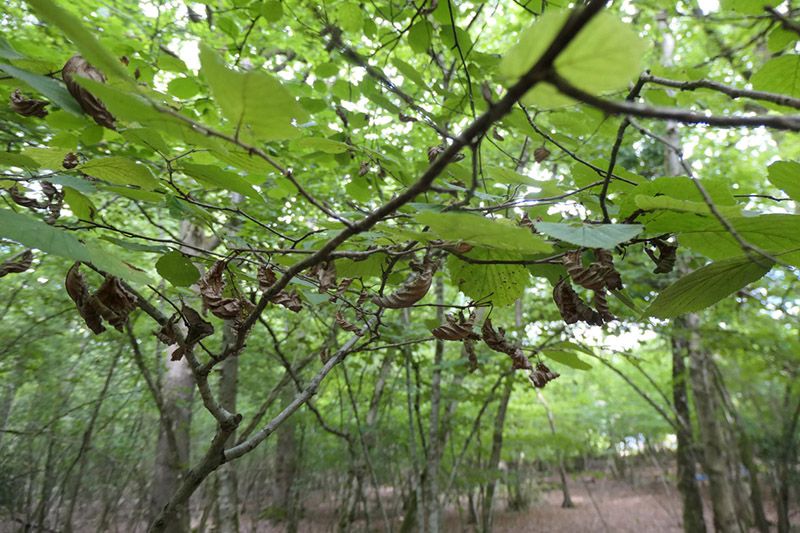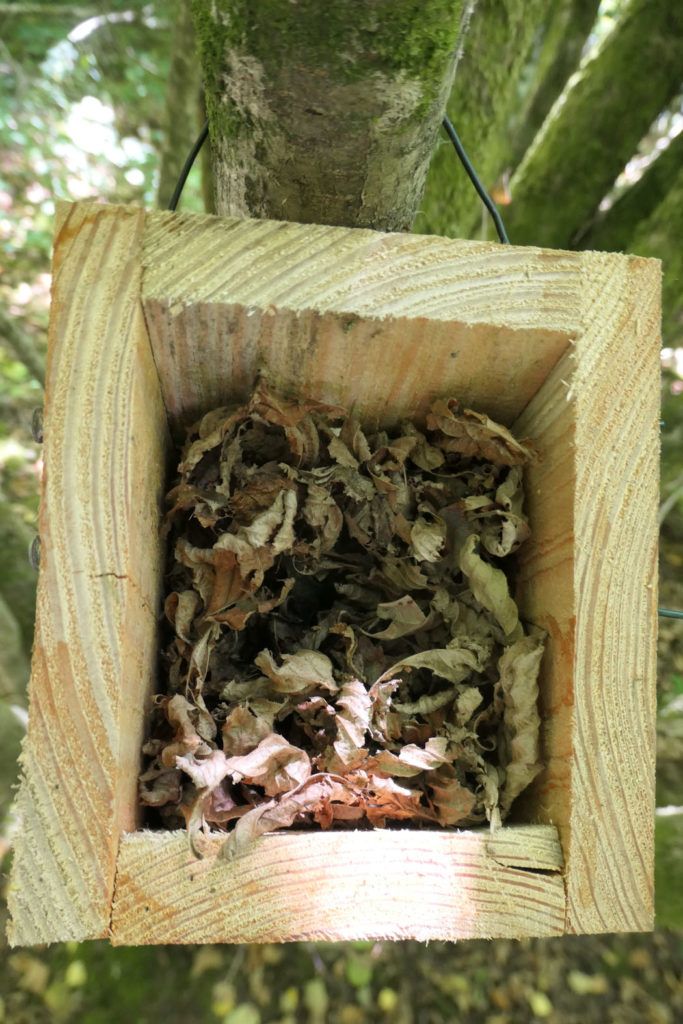The Blackmoor Copse Dormouse Monitoring Team made some surprising discoveries regarding the nesting material hazel dormice were using in their woodland during the hot summer of 2022.
Blackmoor Copse, a 90-acre oak-over-hazel-coppice wood, is owned by Wiltshire Wildlife Trust and lies deep in south-east Wiltshire. The dormouse nest boxes – which have numbered between 90 and 120 at various times – have been monitored monthly from April until October or November every year since 1990.

During this long period of monitoring at Blackmoor, we’ve seen many dormouse nests. Freshly picked, green hazel leaves either with or without woven, shredded honeysuckle bark are the main materials favoured by our dormice. Breeding nests mostly consist of a woven, shredded honeysuckle bark core protected by concentric layers of overlapping fresh, green, hazel leaves. Non-breeding nests are more variable, sometimes consisting of just a few green hazel leaves. Whilst others are a mass of green hazel leaves with no woven core, or a simple woven ball of honeysuckle bark with no leaves.
This year, as in much of the UK, we suffered a prolonged hot, dry period during late spring and summer. It seemed the dormice didn’t need the nest boxes and we found slightly fewer than usual. Then, during our August visit, we began to find several dormice in nests. These nests mainly constituted very curled up, brown, dead hazel leaves, sometimes with a woven honeysuckle bark core. The appearance of the nests was so different to those we usually find that we were surprised to find dormice in them! We started noticing that lots of our hazel stools had shrivelled, brown, leaves – they seemed to have completely dried up and died on the trees.
It appeared that our Blackmoor dormice were deliberately selecting dead, curly hazel leaves this season in preference to fresh green leaves – even in breeding nests. Why? Perhaps the dry, shrivelled, curly hazel leaves provided better insulation against the heat inside the nest boxes, rather than the usual cold and wet weather? Something for a keen student to investigate in future?
Two of us visited the Isle of Wight in late September and noticed that the hazel stools we came across also had large numbers of curled up, brown, dead leaves – presumably also due to drought. Was there any difference in dormouse nest structure in Briddlesford Copse this year too, we wondered?
Written by Sue Walker, Phil Smith, Tony Goddard, Peter Docherty and trainees Tamzin Mason and Mark Townend, Blackmoor Copse Dormouse Monitoring Team.
We haven’t looked in detail at the data from this year, but I have noticed brown leaves in a dormouse nest alongside green leaves which was unusual, especially since there were plenty of green leaves still on the trees. It will be interesting to hear from other monitors whether they saw similar patterns this year. (Nida Al-Fulaij, PTES Conservation Research Manager).

